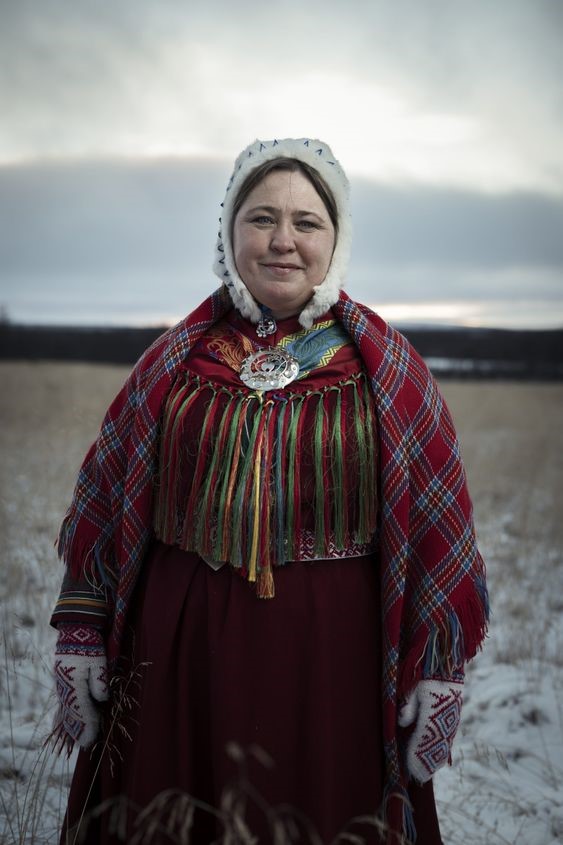Photo of R.Bonaparte, 1884, Finnmark in Norway
“The Sami are the last indigenous population in Europe. The way they are treated and how their culture and history are treated speaks volumes about our ability to understand our own history.”
Olivier Truc / Le dernier lapon
The Sami are the indigenous people of the northernmost part of Europe, living in a territory that crosses the borders of Norway, Sweden, Finland, and Russia. The vast majority of the Sami population is concentrated in Northern Norway, primarily in the county of Finnmark.
They speak Finno-Ugric languages (During the 20th century, on several occasions, the Sami were informed of the prohibition to practice their own language at the expense of Norwegian, as part of a draconian assimilation policy.
Consequence: less than half of the Norwegian Sámi speak Sámi today. This is also the reason why the Norwegian government issued an official apology to the Sámi people in 1999..
Their culture, history, and identity are rich and diverse, blending ancestral and contemporary elements. In this article, I invite you to discover the most remarkable aspects of Sami culture through its artistic, spiritual, culinary, and social expressions..
Sami art : a blend of tradition and innovation
Sami art is based on duodji, which is a type of traditional craftsmanship that reflects the skills and aesthetics of the Sami people. Duodji uses natural materials such as wood, bone, leather, wool, or beads (often products from reindeer). It creates utilitarian or decorative objects, such as knives, drums, jewelry, or clothing. Duodji is also a means of cultural and identity expression, conveying the values and symbols of the Sami.
Sami art has diversified and modernized over time, incorporating international artistic influences such as painting, sculpture, photography, and cinema. They have managed to create an original and innovative style that blends tradition and contemporaneity. They address themes such as identity, nature, politics, and human rights.
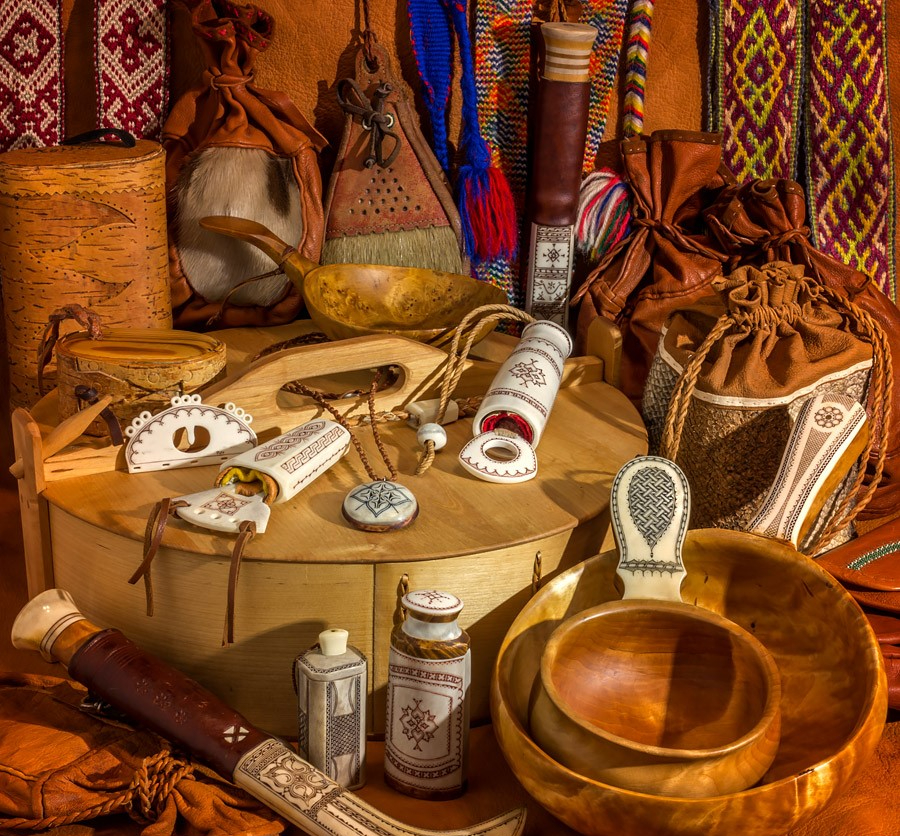
The Sami spirituality: a deep respect for nature
The Sami spirituality is based on shamanism, which is a form of religion that relies on communication with spirits, ancestors, and the forces of nature as well as animals and places. They practice rituals such as animal sacrifice, divination, or healing. The shaman, called noaidi, is an intermediary between the visible world and the invisible world. He uses a magical drum, called meavrresgárri, to enter a trance and access saivo, the magical world where he can communicate with supernatural entities..
The Sami spirituality is also based on animism, which is a belief system that attributes a soul to all living beings, including plants, animals, rocks, and rivers. The Sami revere nature and its elements, such as the sun, the moon, the wind, and fire. They respect and honor the spirits that inhabit nature, such as the sieidis, which are sacred stones where offerings are placed and sacrifices are made.
The Sami spirituality is also based on syncretism, which is a form of belief that combines elements from different religions. The Sami have adopted aspects of Christianity, Buddhism, shamanism, or other spiritual traditions. They have also preserved elements of their original religion, such as the joik, the traditional Sami song that expresses the essence of a person, a place, or an animal. Sami music was long repressed and banned by religious and political authorities, who considered it pagan and demonic. It was only from the 1960s onwards that Sami music experienced a revival and recognition..
Finally, it is based on the cosmovision, which is a worldview that integrates the spiritual, moral, and aesthetic dimensions of reality. The Sami believe that nature is inhabited by spirits, ancestors, and supernatural forces that must be respected and honored..
The Sami worldview is also a vision of the world that recognizes the diversity and interdependence of all living beings. The Sami have a holistic conception of the person, which includes the body, the soul, and the name. They also have a circular conception of time, which follows the cycle of seasons, days, and nights. Their understanding of space is based on emotional and social connections rather than on geographical distances..
The Samie worldview is also a perspective that values creativity and self-expression..
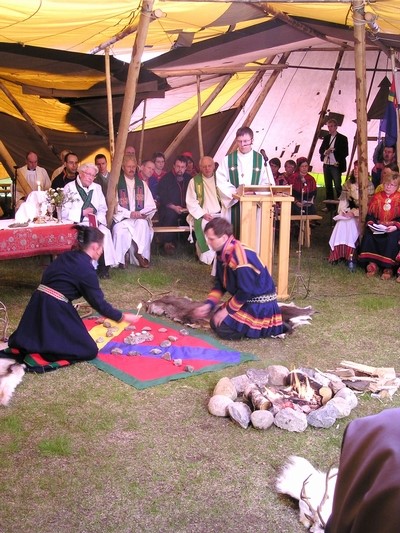
Samie gastronomy: a cuisine adapted to the environment
The Sami cuisine is based on reindeer meat, which is the main source of food for the Sami people. Reindeer meat can be prepared in various ways: smoked, salted, dried, boiled, or grilled. It can be accompanied by flatbread (gáhkko), cheese (gáhkkuostá), berries (áhkku), or mushrooms (gáhkkir). The traditional Sami dish is bidos, which is a reindeer stew served with potatoes and carrots.
The Sami cuisine is also based on fish, which is another important source of food for the Sami people. Fish can be caught in lakes, rivers, or the sea. It can be consumed fresh, salted, dried, or smoked. It can be served with bread, butter, potatoes, or vegetables. The traditional Sami fish dish is suovasguolli, which is smoked salmon..
Local plants are used in traditional pharmacopoeia: wood hyacinth in jelly, glacier buttercup in dried flower for herbal tea, Icelandic lichen in bread, in soup, in herbal tea, after being dried and boiled following a fatty meal, it is used to treat fever and to gargle for sore throat, dwarf birch leaves in oil and alcohol for stomachache, particularly good for young children, promotes intestinal flora and herbal tea, etc.
In the past, reindeer fat was used to treat stomach aches. There is some logic to this if the pain was related to undernutrition..
The Sami cuisine can be discovered, for example, at the Riddu Riđđu festival, which takes place every year in July in Manndalen in Troms county and offers a variety of cultural and culinary activities related to Sami culture..
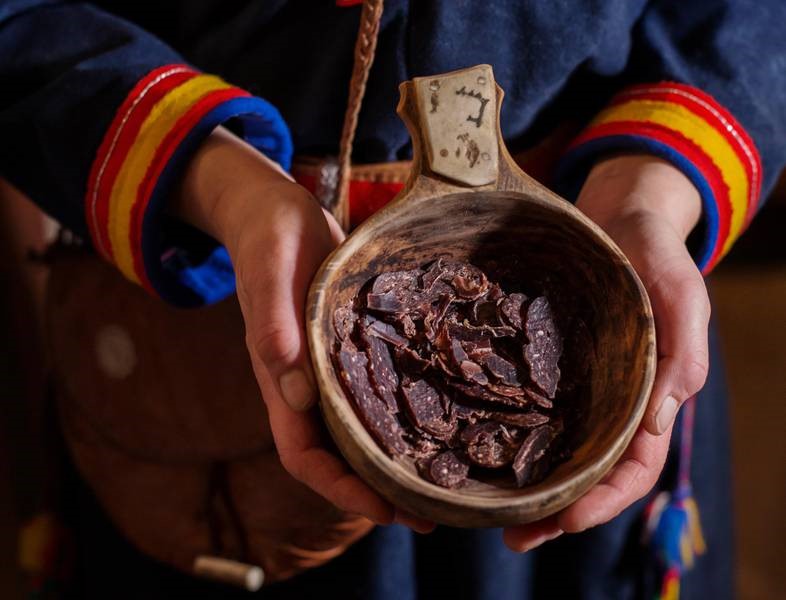
The samie society: a sharing and solidarity
The Sami society is based on respect and harmony with nature, which is considered sacred and alive. The Sami have a close relationship with reindeer, which are both their source of food, clothing, transportation, and spirituality. The Sami also have an in-depth knowledge of their environment, which they use for navigation, healing, and sustenance. The connection between the Sami and nature is founded on traditional ecological knowledge, which is a set of knowledge, practices, and beliefs related to the environment. This knowledge is passed down from generation to generation, allowing the Sami to adapt to climate change, manage natural resources, preserve biodiversity, and maintain their culture..
The Sami society is also based on sharing and solidarity, which are essential values for surviving in harsh climatic conditions. The Sami have a social organization founded on the extended family, the clan, and the siida, which is a community of reindeer herders. The ideal number of children in the Sami mindset is about four or five children per couple. More would be exhausting for the mother and too disadvantageous for the sharing of inheritance. Fewer would be harmful to the children themselves, who, in the event of the parents' death, would find themselves without support: "An only child is like the isolated tree, alone against the wind, it has no support from the forest." The Sami also have a sense of hospitality and generosity, which is manifested, for example, by the offering of bidos to guests..
The Sami society is also based on mixing and openness, which are the result of contacts and exchanges with other peoples and cultures. They have also integrated artistic, musical, or linguistic influences from various origins. The Sami are proud of their heritage and identity, but they are also curious and tolerant towards others..
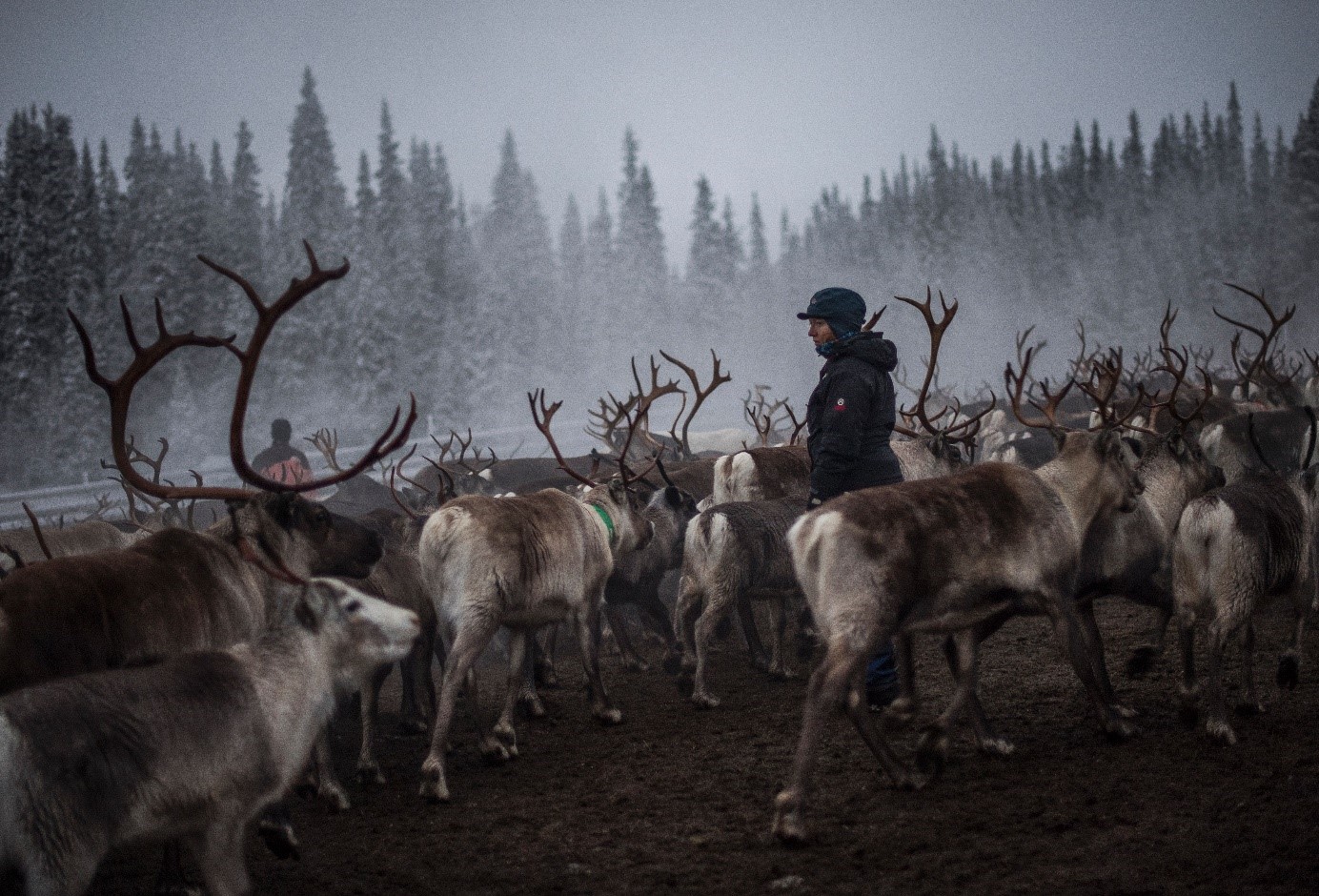
Conclusion
The Sami are a fascinating people, having a perfect balance between tradition and modernity, who have managed to preserve and evolve their millennia-old culture. They invite us to discover their unique and sustainable way of life through their artistic, spiritual, culinary, and social expressions..
Thank you for reading this article, I hope you enjoyed it
